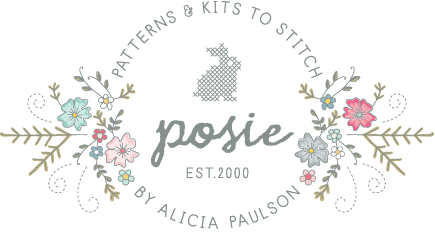I frame all of my embroidery pieces myself at a local-do-it-yourself frame shop. Many cities have these shops and I highly recommend using them. Framing this way is easy and less expensive than having your piece framed entirely by someone else, and this way you can get it perfectly even and stretched to your preferences.
To start, you'll need to press your piece carefully at home (press it face down into a piece of terry cloth to avoid crushing the stitches), then roll it onto a wrapping paper tube for transport. When you get to the shop, you can look through their samples and select a frame. Be sure to tell the store associate whether you will be using glass on top of your embroidery or not (I don't use it), because that will determine what kind of frame you can choose. You'll also have to decide what kind of margin you'd like between the frame and the edges of the stitching. If you're using a pre-made frame — the Daisychain Alphabet Sampler was designed to fit into a pre-made 11-inch x 14-inch frame — you will have about a 1-inch margin. If you are going with a custom frame, you'll have to decide how much margin you want.

Once you've selected your frame, the store associate will measure and order it for you. Then she'll cut you a piece of foam core to the exact measurements of the inside of your frame. To stretch the embroidery around this foam core you'll need a clear plastic ruler and a whole lot of straight pins (which they should provide). I'd bring coffee, too (don't spill it), 'cause this is gonna take a while.
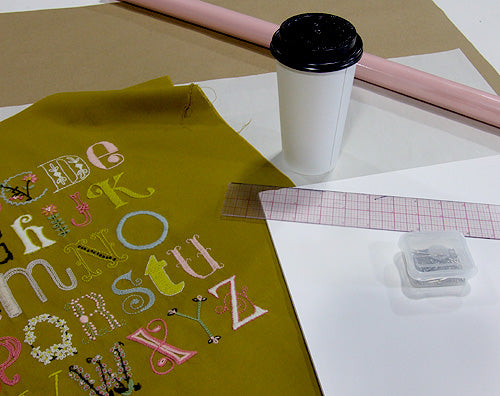
To begin stretching and pinning your embroidery around the foam-core, begin centering it by just eyeballing it, and placing a few pins -- don't push them in too far yet -- around the edges. Then use your ruler to help you get your letters parallel to the edges by making small adjustments and pulling the fabric slightly against your already-placed pins.

Place more pins, working your way around the piece. It can be easier to work on opposite corners then to go around in a clockwise manner. Keep pinning until everything is straight, stretched to eliminate (most -- some may be inevitable) wrinkles, and well centered.

Then push each pin all the way in. A thimble can help here. Tape the raw edges of the fabric neatly to the back.
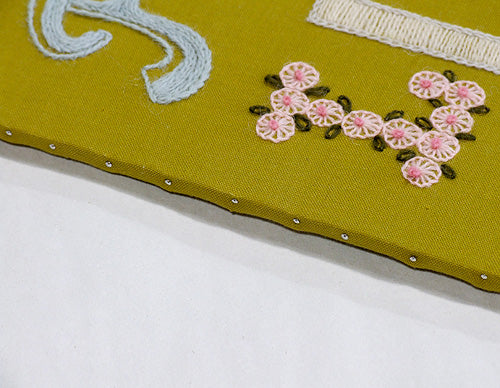
When your frame is ready, the frame shop will call you and let you know it's time to work on the next phase. Bring your stretched embroidery back to the shop and they'll supply you with tools to finish this part.
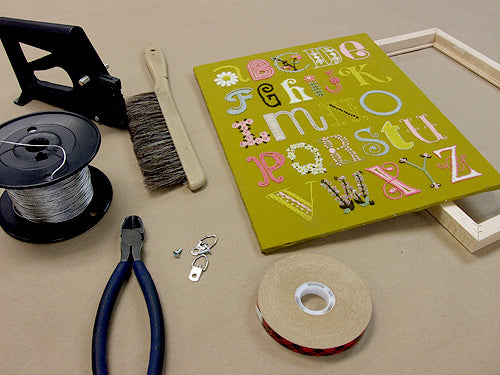
Place the embrodiery in the frame:
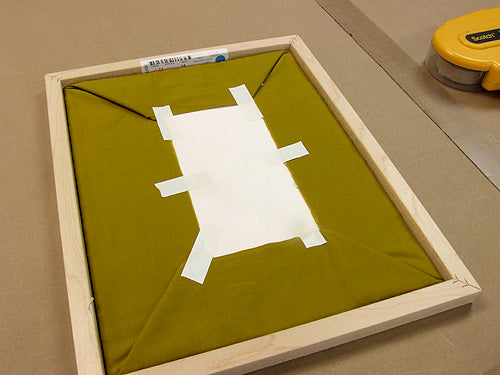
They'll give you a piece of board to go over the embroidery, and a special nail gun that you'll use to shoot flat "nails" into the inside edge of the frame to hold your piece in place.

When you've gone all the way around all edges, use the tape gun to place a ribbon of double-sided tape along the back edges of the frame.

Brown paper is smoothed over the back of the frame. Then use a sander to cut the edges of the excess paper. This makes a nice smooth finish.

Next place your hanging hardware on each side of the frame, about 1/3 of the way down from the top.

You're almost done! Now just run a piece of picture-hanging wire through the two eyelets, and place little felt tabs on top of the screws (so they don't scratch your walls) and you're good to go.
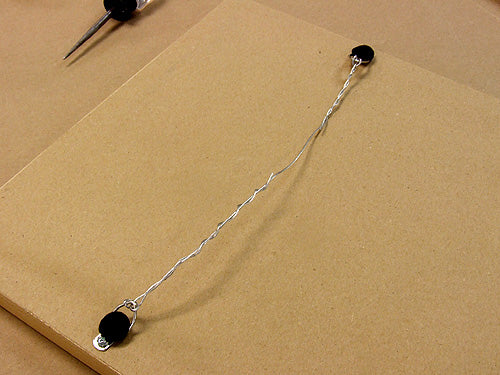
Nice job! See, that wasn't so hard! :-)
